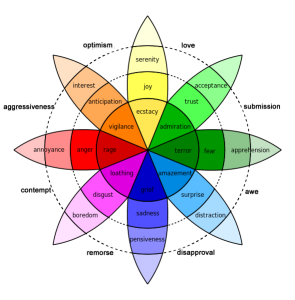July 1, 2013
Emotional Mastery Series #4

Masquerading around our lives are pseudo-emotions. Seducing us to call them “emotions,” to think of them as real emotions, and to respond to them as if they were actually “emotions,” these masquerading false-emotions plague our lives and those of our loved ones. And what makes them so tricky and so difficult to catch is that you and I can create them in a moment, in a nanosecond.
Now it is true that with most of these pseudo-emotions, there is an actual emotion lurking somewhere within. Yet that’s the problem, while there is a real emotion present, it is covered-up and ignored, and the pseudo-emotion is given prominence. Now we have two problems. First, we don’t know or are unaware of the real emotion and we are over-invested and confused by the presence of the pseudo-emotion, mistakenly thinking that it is the actual emotion.
Now to create one of these pseudo-emotions in a mere moment of time, all you have to do is to start a sentence with the words, “I feel . . .” Then to complete the deception, just add a judgment.
- “I feel put off by her.”
- “I feel offended by his foul mouth.”
- “I feel low self-esteem.”
- “I feel mediocre.”
- “I feel defeated by all this talk of what we cannot do.”
- “I feel stupid when he takes-over in the meeting when I am talking.”
- “I feel that you don’t listen to me.”
And the list goes on and on and on. I feel defeated, like a failure, ugly, beautiful, stupid, like a winner, triumphant, inadequate, dominated, cheated, silly, like a kid, etc. Yes these are pseudo-emotions and, as pseudo-emotions, they deceive you into thinking you are experiencing or working with an actual emotion when you are not. In this format, you have made a judgment or evaluation and framed it with the words “I feel . . .” but you have not identified an emotion or a feeling. You have only shared a judgment.
Now there probably is a real “emotion” down underneath the judgment. When you say something like: “I feel judged.” “I feel mediocre.” “I feel put down.” my guess is that you are feeling the emotion of frustration or anger. Or it could be fear or stress. There will be some negative emotion that reflects something about your world that isn’t working well. But instead of identifying the emotion and getting in touch with the feeling, you have judged the experience and then deceived yourself thinking that it is an emotion when it is not.
In a video-tape that we made of expert coaching, Graham Richardson, coaching in Sydney at the ACMC training in 2011, he commented “So now you’re getting real.” And then he asked, “How does that feel?” His client said, “Real.”
Graham immediately recognized that was a pseudo-emotion and so commented: “Yeah. But how does it feel?” His client then said, “Pretty good.” So Graham explored, “And how does that feel? I need a feeling.” The client then said, “I feel very centered.”
At those words, Graham confronted him directly, “That’s not a feeling.” Real- Pretty good- Centered – three attempts at identifying a real emotion and still the client had expressed no actual emotion! That elicited a long ten second pause … At which time, the client said, “It’s the feeling in my chest…. (holding hand on chest).” To that Graham said, “Yes! What is that feeling?”
Another pause, this time for three seconds, “… It’s the feeling of being unstoppable if I choose to.” Another pseudo-emotion. Graham commented; “Yeah, not a feeling.” … and then asked, “Are you connected to your feelings?” At which point the client acknowledge, “I push them down.”
Consider that coaching interchange: the client used four words in a row, quickly, at first and then more and more slowly as he tried to identify his emotions, but in the final analysis, he was not able to identify his actual emotions, just his judgments: real- pretty good- centered -unstoppable. For some people, maybe for the majority, identifying, detecting, and being aware of what we actually feel is a tremendous challenge.
So many, many years before “Emotional Intelligence” was popular, NLP dealt with this as we talked about emotional states. What state are you in? Basic NLP introduced the idea of intelligently handling our emotions by talking about eliciting states, detecting states, anchoring states, shifting states, working with our states, and transforming our states. And this became even more developed with the discovery of the Meta-States Model because to understand a meta-state, you have to understand states.
When is an emotion not a real emotion? When we present abstract ideas and evaluations about ourselves and our world and do so using the linguistic template, “I feel …” Don’t be fooled, just because someone starts a sentence with, “I feel…” does not mean that they are talking about their emotions. Keep asking, check to see where they feel that in their body. If they cannot point to where they feel that in their body, it is probably not a real emotion.
L. Michael Hall, Ph.D.
